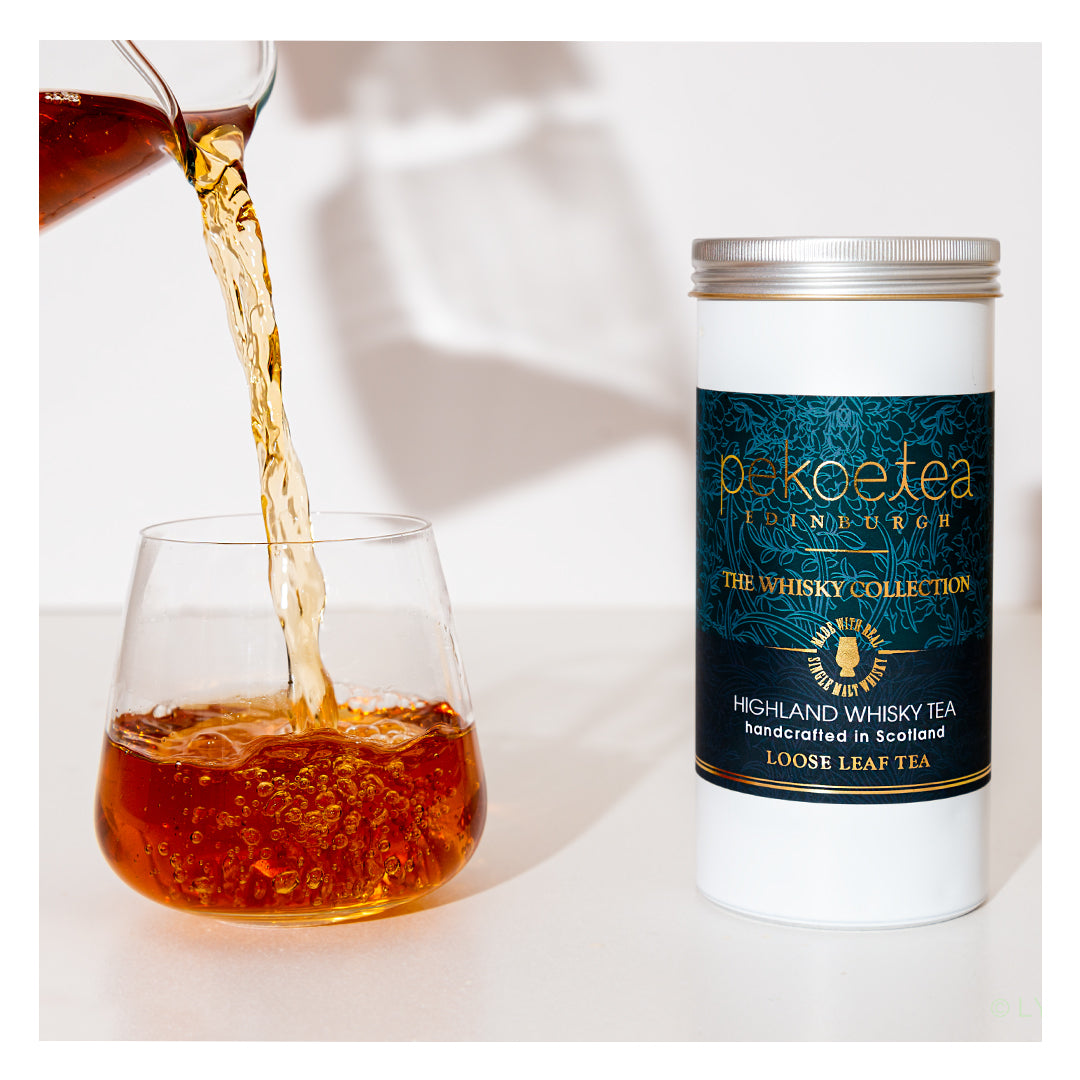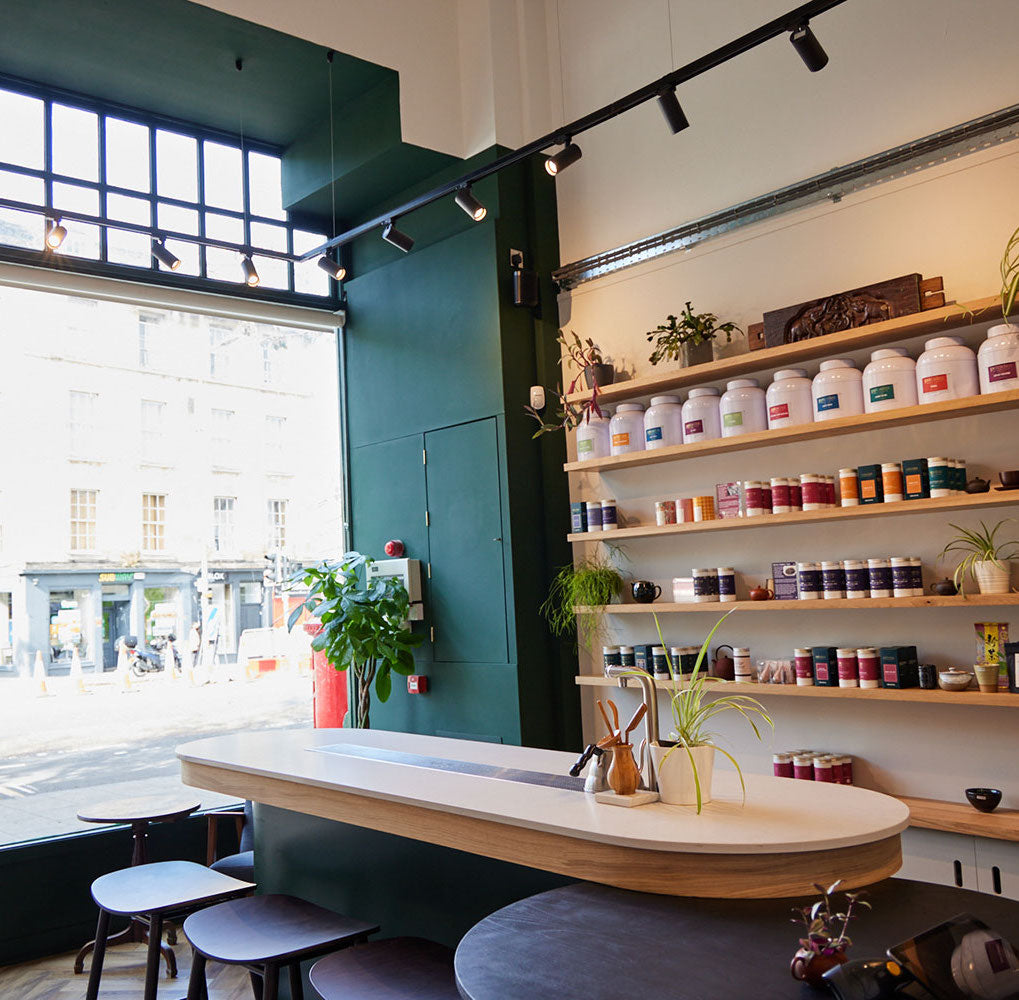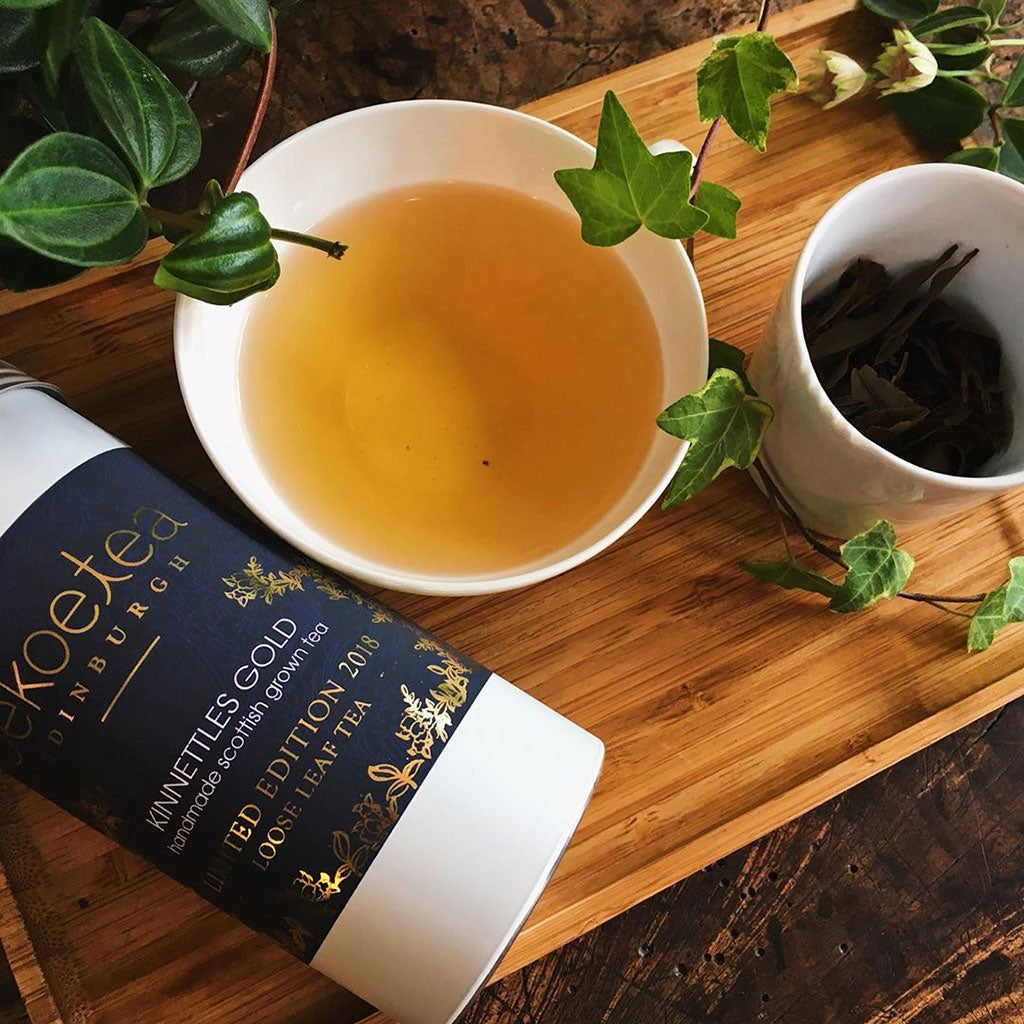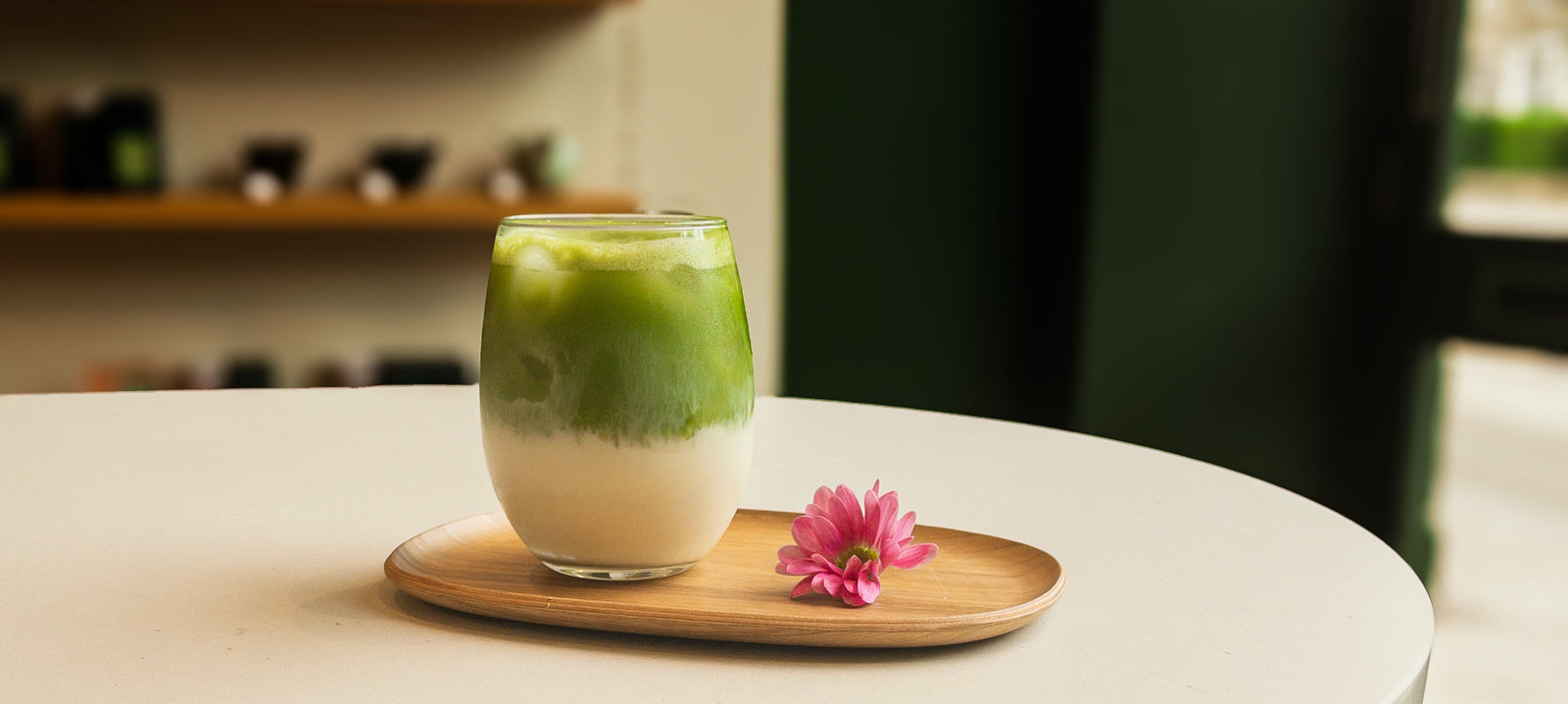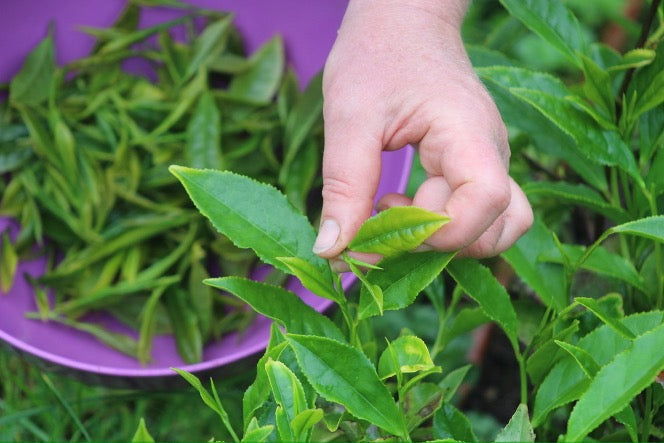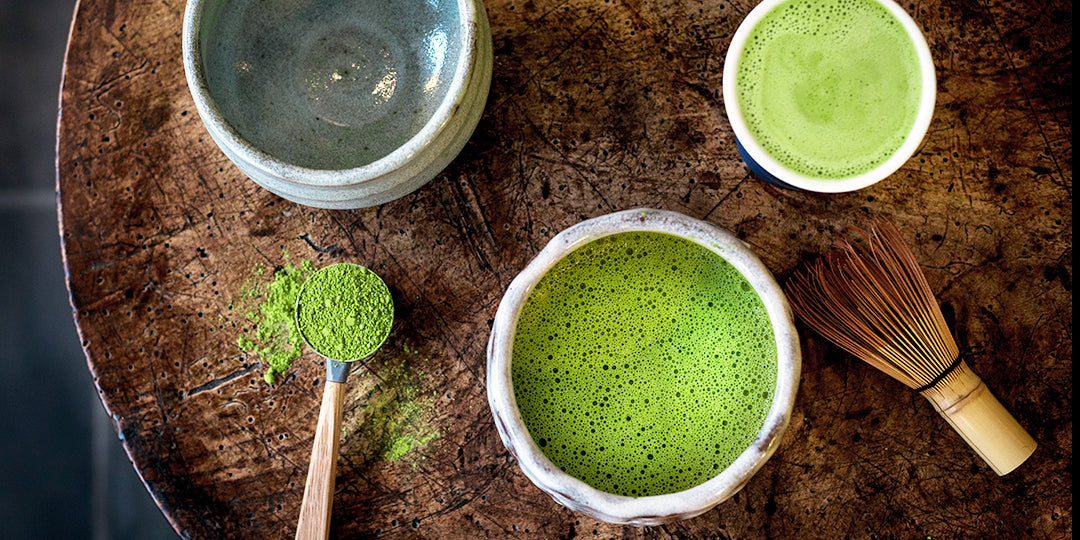Lung Ching (Long Jing) Dragonwell green tea is China's national drink. It is cultivated and processed in Hangzhou in Zhejiang province, China.
Lung Ching tea gets its name from a well near the West Lake in Hangzhou. When it has been raining it is said that the rainwater on the surface of the well creates ripples that look like Chinese dragons swimming through the water.
 In order for tea to be called Lung Ching it has to originate from the Hangzhou area of Zhejiang province. There are teas from other areas in China that are prepared in the same way but are usually only know as Lung Ching Style tea. There are many grades of Lung Ching tea with one of the finest grade known as Pre-Qingming Lung Ching. This is tea that is harvested before the qingming festival around the 5th April each year - also known as pre-rain Lung Ching. The finest grades of Lung Ching are usually sent to the government instead of the growers paying financial taxes on their revenues.
In order for tea to be called Lung Ching it has to originate from the Hangzhou area of Zhejiang province. There are teas from other areas in China that are prepared in the same way but are usually only know as Lung Ching Style tea. There are many grades of Lung Ching tea with one of the finest grade known as Pre-Qingming Lung Ching. This is tea that is harvested before the qingming festival around the 5th April each year - also known as pre-rain Lung Ching. The finest grades of Lung Ching are usually sent to the government instead of the growers paying financial taxes on their revenues.
Lung Ching has a very distinctive appearance with flat brittle bright green leaves and the flavour is also very distinctive - this is because of the way it is processed by pressing the leaves against a hot surface. The earlier picked leaves are usually lighter in colour with pointy tips and sometimes have small white lumps on them. These lumps are a result of the fine hairs that grown on the leaf buds clumping together during the processing.
The picked tea is collected in small baskets and taken to one of the local processors. Here it is laid out in wicker trays for several hours. After this, the tea undergoes 2 rounds of pressing with a break in between for drying in the air.
 The first round of pressing is carried out using a machine that presses the the leaves against a very hot surface. After the first pressing, the leaves are rested for a while in wicker baskets in the open air before undergoing a second pressing. The second pressing is carried our by hand and it is this pressing that requires the skill of a tea master who can tell when the tea is ready. The tea leaves are pressed by hand against the hot surface of a wok like bowl that has been oiled with tea seed oil to stop the leaves from sticking. The heat is lower than that of the first pressing and is more commonly generated with electricity although there are many tea masters who still use burning wood.
The first round of pressing is carried out using a machine that presses the the leaves against a very hot surface. After the first pressing, the leaves are rested for a while in wicker baskets in the open air before undergoing a second pressing. The second pressing is carried our by hand and it is this pressing that requires the skill of a tea master who can tell when the tea is ready. The tea leaves are pressed by hand against the hot surface of a wok like bowl that has been oiled with tea seed oil to stop the leaves from sticking. The heat is lower than that of the first pressing and is more commonly generated with electricity although there are many tea masters who still use burning wood.
 One of the interesting things about the way in which Lung Ching is still processed is that most of it is still done by hand by men who sit at the side of the road in small villages in the area. It has become something of a tourist attraction and when you visit the area you can buy lunch and sample the tea while watching the tea masters at work.
One of the interesting things about the way in which Lung Ching is still processed is that most of it is still done by hand by men who sit at the side of the road in small villages in the area. It has become something of a tourist attraction and when you visit the area you can buy lunch and sample the tea while watching the tea masters at work.
Lung Ching is said to be good for its cooling properties and one of the best places to enjoy a glass of fresh Dragonwell tea is at one of the cafes on the edge of the West Lake on a hot Summer day.

